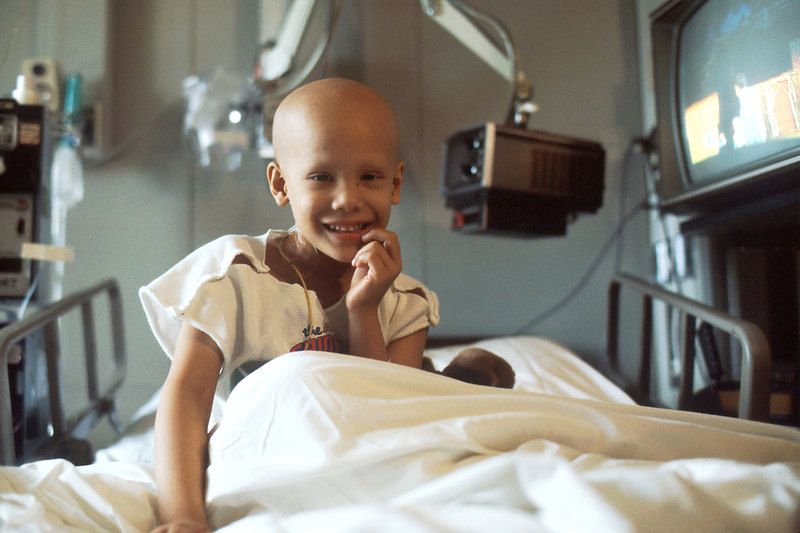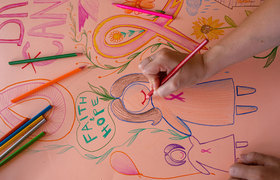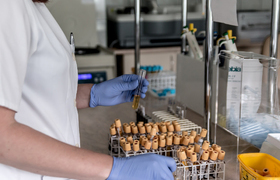Childhood cancer: ramp up awareness and save lives
19 September 2022 | Story Niémah Davids. Photo Unsplash. Read time 5 min.
The University of Cape Town’s (UCT) Associate Professor Marc Hendricks is leading an important nationwide call for action: to increase much-needed awareness on childhood cancers to catapult early diagnosis and treatment and improve outcomes for children living with cancer in the country, on the continent and around the world.
Associate Professor Hendricks, a paediatric oncologist at the Red Cross War Memorial Children’s Hospital – a UCT teaching hospital – made this urgent impassioned plea during Childhood Cancer Awareness Month which is observed in September.
According to the World Health Organization (WHO), roughly 400 000 children and adolescents develop cancer every year. In high-income countries, where care and services are easily accessible, more than 80% of children with cancer are cured. But it’s a different case scenario for children in low- to middle-income countries where less than 30% are reported to survive the disease. This is often as a result of a lack of diagnosis, misdiagnosis, delayed diagnosis or obstacles accessing care in resource-constrained settings.
“The sooner a medical team makes a diagnosis, the better.”
“I can’t stress the importance of seeking help early. The sooner a medical team makes a diagnosis, the better. Early referral means a lower disease stage, which will require less intensive treatment that will lead to few, if any, long-term effects and a much better chance of survival,” Hendricks said.
The tell-tale signs
The most common types of cancer in children in South Africa are leukaemia and malignant brain tumours, both of which affect 30% of children respectively. Further, paediatric oncologists at Red Cross War Memorial Children’s Hospital also frequently treat children with malignant tumours of the bone, muscles, nerves, eyes, kidneys and liver, as well as of the testes and ovaries.
“Despite ongoing research in this area, the cause of cancer is still unknown. Some [cancer types contain] identifiable genetic abnormalities, but the causes are different in each tumour. There’s not one identifiable abnormality for all cancers,” Hendricks said.
He highlighted several key tell-tale signs that parents and caregivers need to look out for in children of all ages that could indicate early signs of cancer:
- unexplained bleeding and an unusually pale skin colour
- enlarged lymph nodes
- unexplained masses (growths)
- unrelieved bone pain that moves from one site to another and wakes children at night
- persistent high fever, loss of appetite and weight loss
- eye defects – an eye that protrudes forward, acute onset of a squint and loss of light reflex
- neurological defects – weakness on one side of the body, recurring morning headaches, vomiting and seizures.
Inroads with treatment
Reassuringly, Hendricks said scientists and clinicians have made massive strides with improving childhood cancer outcomes in the last few decades. This, he added, can be directly attributed to collaborative research efforts led by large international consortia in Europe and the United States. And while a number of significant advancements have been made over time, Hendricks said this area of medicine is constantly evolving. One of the most exciting research developments that has come to light recently includes the molecular reclassification of the disease. This process allows clinicians to use molecular signatures of tumours to categorise the risks associated with the type of cancer, predict the prognosis accurately, and select the most appropriate treatment for the patient.
In addition, ground-breaking developments in surgical and radiotherapy techniques, as well as advanced chemotherapeutics and improved supportive care like paediatric intensive care support have equally contributed to improved outcomes in the country, on the continent and globally. Interestingly, Hendricks also noted that while treatment elements like chemotherapy, radiotherapy and surgery are similar for both children and adults, the treatment protocols are significantly different.
“Because children metabolise chemotherapy very differently, they are able to tolerate far more intensive treatment compared to adults. So, the outcomes for children with cancer in general are far better when compared to adults, which is very encouraging,” he said.
Contribute meaningfully
Hendricks encouraged South Africans to sign up to the South African Bone Marrow Registry (SABMR) to assist patients in need of a bone marrow transplant. The SABMR assists hundreds of South Africans – both children and adults with blood diseases like leukaemia – to locate a bone marrow donor. The organisation searches both locally and internationally for donor matches.
“Registering to become a donor is your opportunity to make a wonderful, selfless and meaningful contribution to both child and adult health, here at home and abroad. It’s an excellent way to make a difference in the life of someone who needs it most and that of their families,” he said.
 This work is licensed under a Creative Commons Attribution-NoDerivatives 4.0 International License.
This work is licensed under a Creative Commons Attribution-NoDerivatives 4.0 International License.
Please view the republishing articles page for more information.










